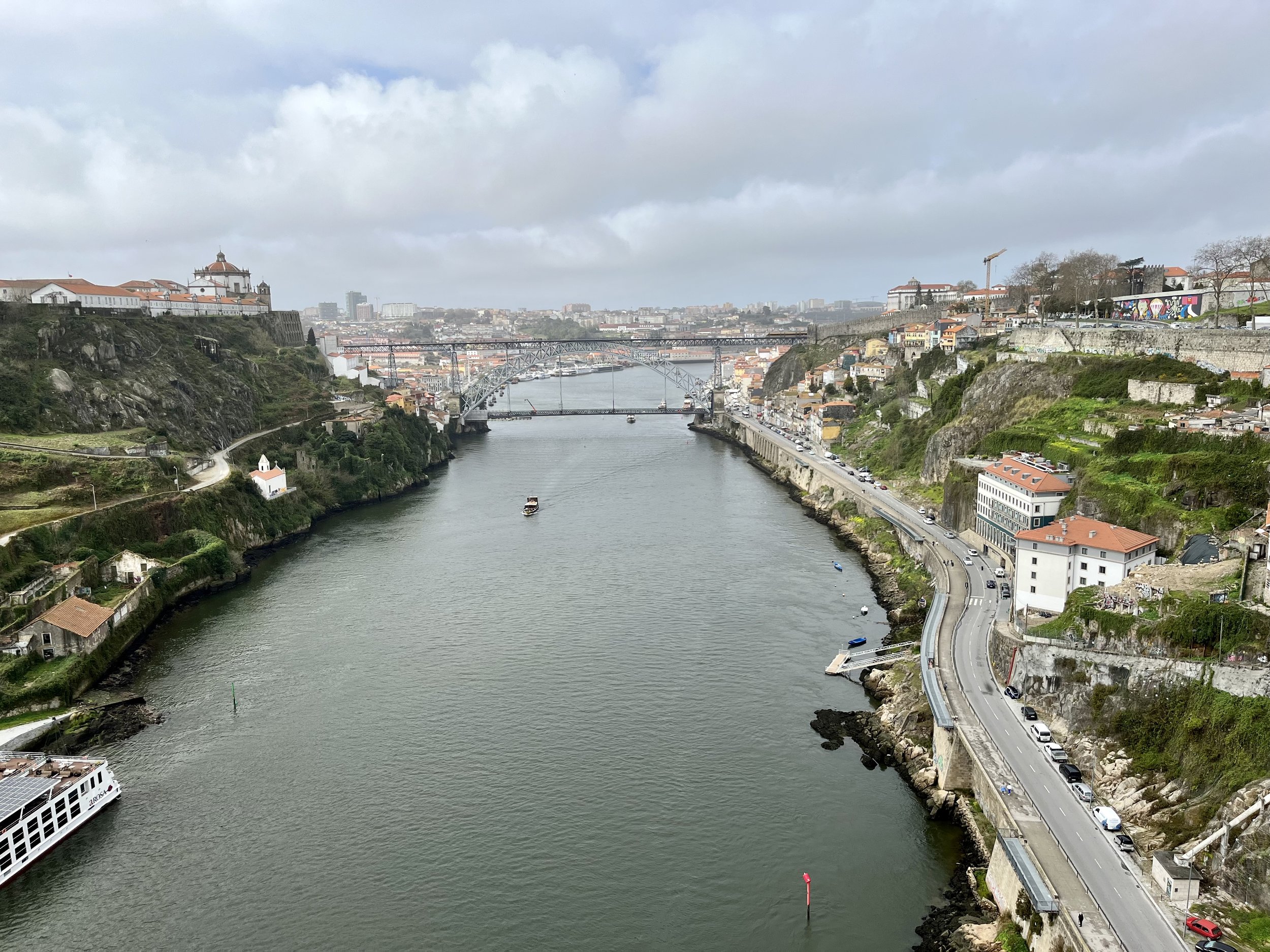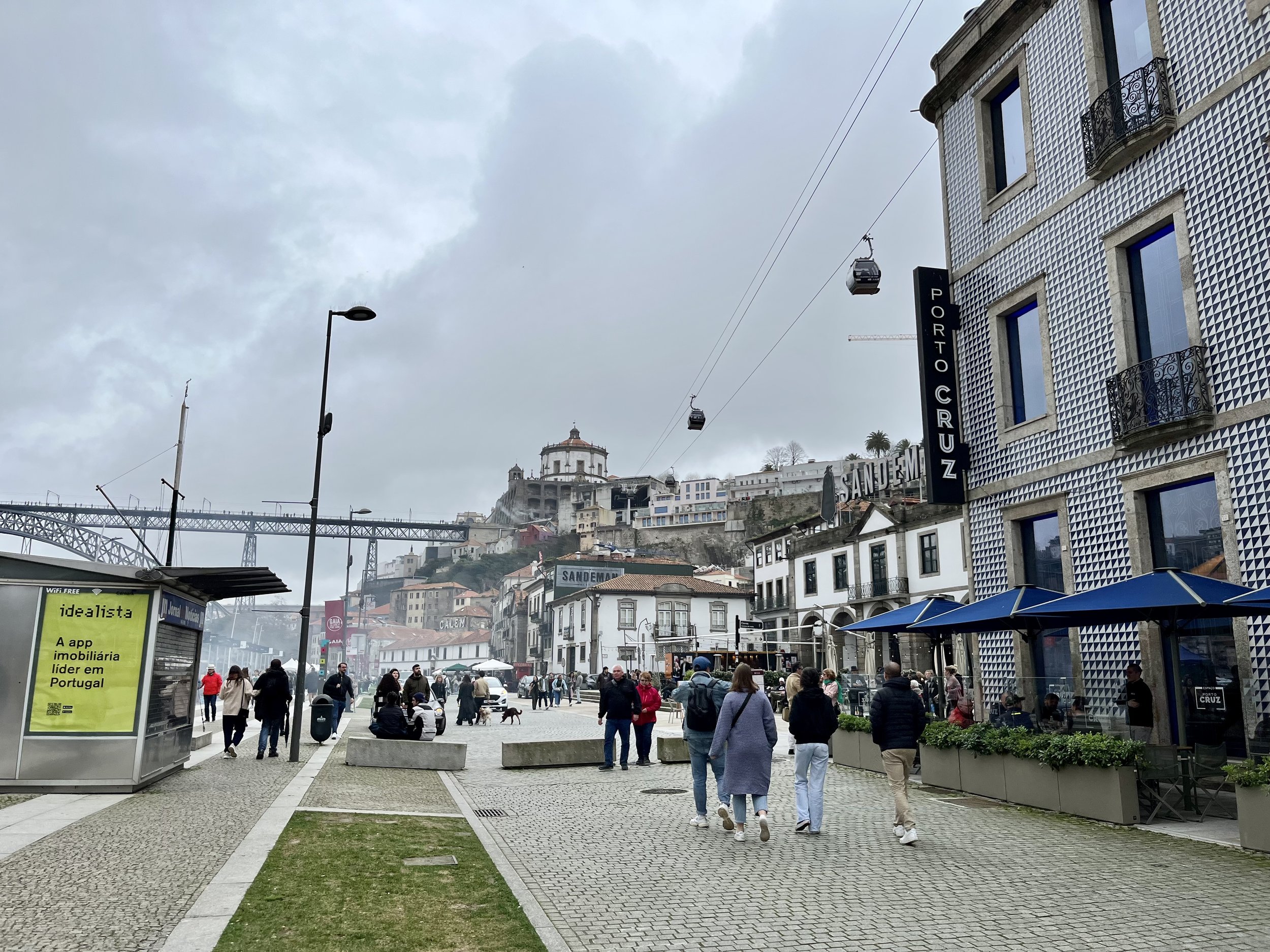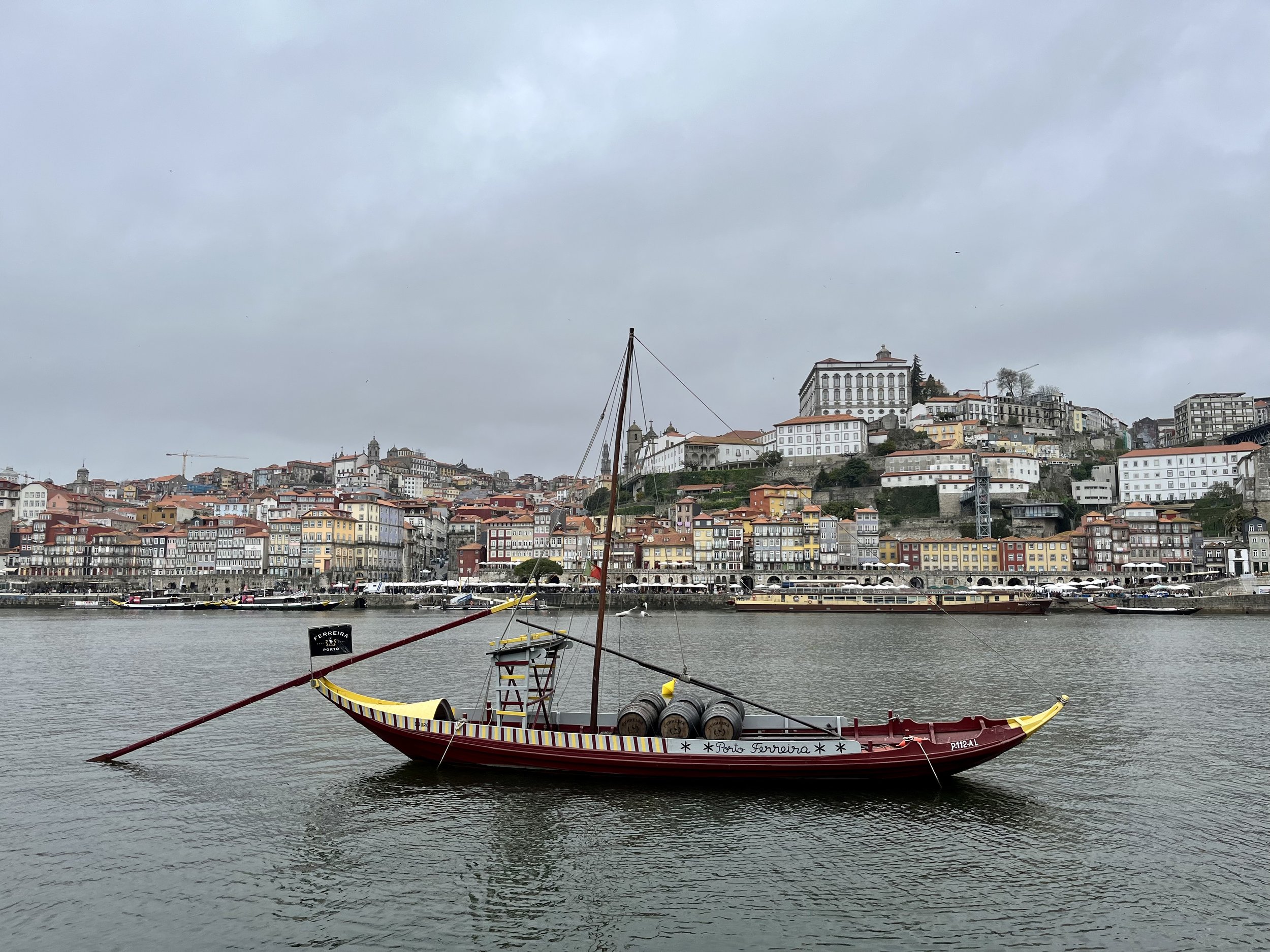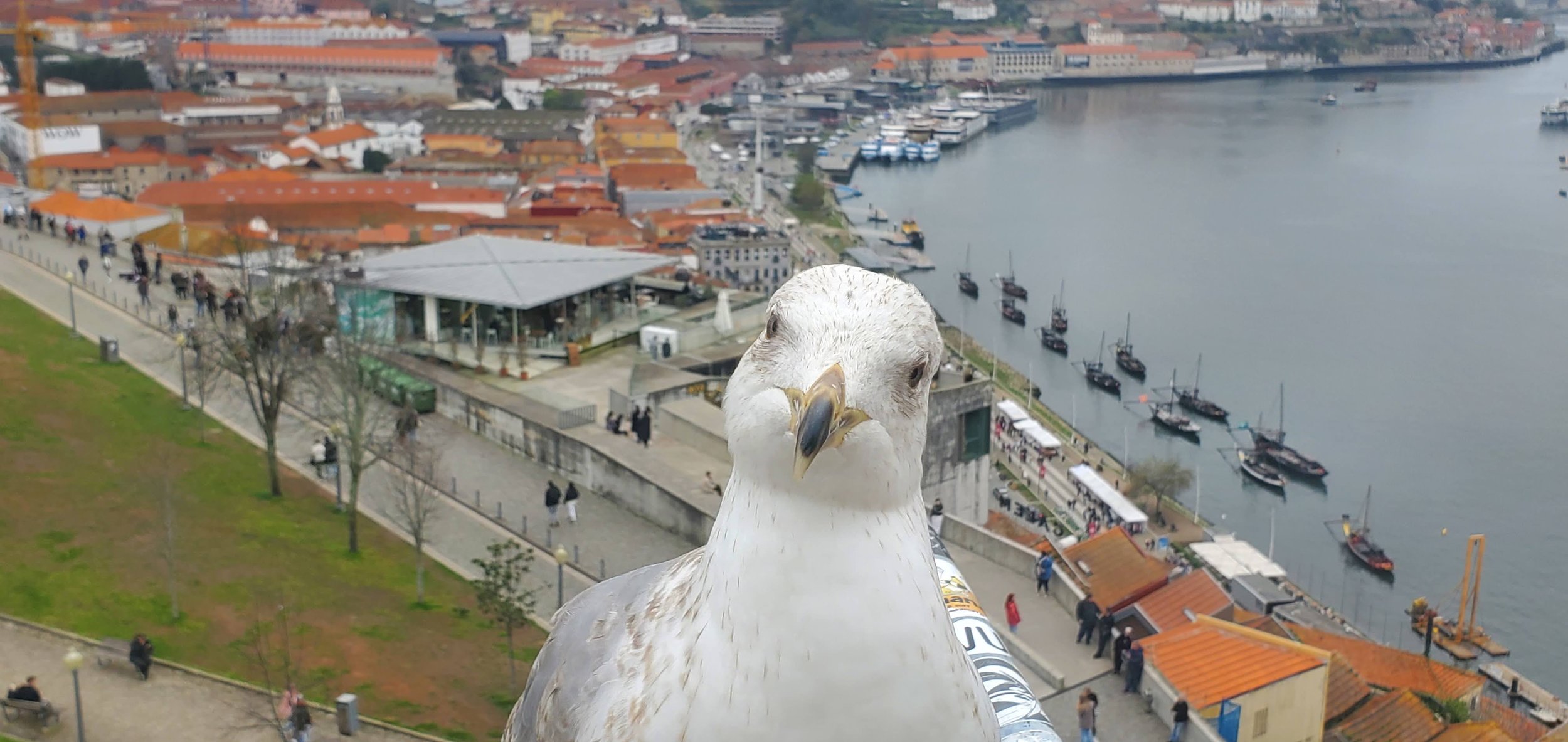Across the River to Vila Nova de Gaia
It’s a tale of two cities. On the North side of the Douro River is Porto and on the South side is another city called Vila Nova de Gaia (or Gaia for short). Known most famously for it’s port wine caves, Gaia has a certain charm all to its own.
Can you guess which side is Porto and which side is Vila Nova de Gaia?
(Porto is on the right, Gaia is on the left).
Vila Nova de Gaia is most known for its port wine caves. All (or almost all) are open for tours, and it’s well worth the experience to walk into a barrel room and take in the smell of port wines aging in their caskets.
After doing some research, we opted to climb a big hill up to Taylor’s for our port wine experience. One of the main reasons was because they offered a self-guided tour which let us go through the place at our own pace and ended in a tasting room with a private garden full of peacocks and chickens.
The flat, pedestrian friendly waterfront area has shops, restaurants, and pop up stalls selling souvenirs. And on this side of the river, things are less crowded and sometimes a bit cheaper too.
Lined up along the shore are examples of the old Rabelo boats that would carry the wine from the vineyards in the Douro to the wine caves in Gaia to age (these are not the type of boats you take for the river tours though).
Most of the wine caves are along the waterfront so there’s no need to climb hills if you don’t want to. The oldest wine cave, Casa Kopke, goes all the way back to the 1600’s.
And the award for best marketing goes to Sandeman. Their iconic shadowy figure in a dark hat and cape can be seen everywhere in Porto.
I don’t usually post pictures of stores, but this is Mundo Fantástico da Sardinha Portuguesa. It really is like entering Willy Wonka and the Portuguese Canned Fish Factory. There’s brass band fanfare, oversized wooden toy soldiers, a throne made of a giant tin can flanked by two large fish, and on the second floor, there are open vaults containing rows and rows of golden tins stacked like bars of gold.
Not to be outdone, next door is the Casa Portuguesa Pastel Bacalhau. There are floor to ceiling shelves filled with old books, live organ music, chandeliers, and a ticket booth to buy a Bacalhau pastry and glass of port.
It’s hard to miss the Mosteiro da Serra do Pilar along the Vila Nova de Gaia skyline. A former monastery built in the 1500’s, it’s currently closed to the public, but you can still wander around the exterior.
The monastery is one of the highest look out points along the waterfront. The seagulls are also very friendly here and we were able to get a few good closeups.
Half Rabbit is one of Porto’s most popular examples of street art. Formed by bits of electronics, plastics, and other discards, this is another example of Bordalo II’s work.
While the Half Rabbit is kind of hard to miss, as we wandered around Gaia, we began to notice small depictions of tiny maintenance workers in alleys and stairways. Soon, we were on the lookout for these works by Belgium street artist Jaune.
Here’s another set of tiny maintenance workers painting a building hidden in a stairwell!
We stopped off at the Jardim do Morro for some greenspace and beautiful views before hopping on the nearby metro back to Porto.
We went back to Gaia twice. Although the riverside is where most of the action is, there are still many alleyways to explore!















